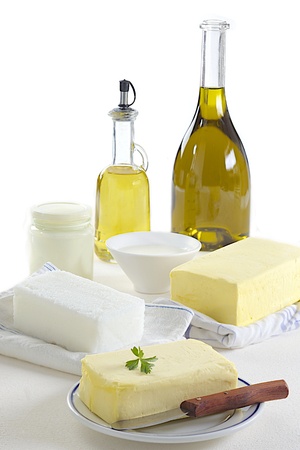Note that your final mark will not be saved in the system.
Fats, Oils and Lipids GapFill
You must fill all the gaps before clicking ‘Check Answers!’

Fats, also known as lipids, are built from one molecule of and three molecules of . They can be divided into different types depending on their physical state. If they are at room temperature they are simply referred to as fats, and if they are they are referred to as oils.
Fats can also be divided depending on their chemical structure. If a molecule of fat has single chemical bonds only, it is called . If a fat molecule contains one or more double chemical bonds, it is called . Unsaturated fats can be divided into monounsaturated and polyunsaturated fats, depending on how many pairs of carbon atoms they contain. Fats are present in many food products: for example, fats are in butter and lard, while fats are in cakes and cheese.
Fats, along with carbohydrates, are a source of energy. They also and . Fat deficiency can lead to a condition called because of . Eating too much fat can result in .